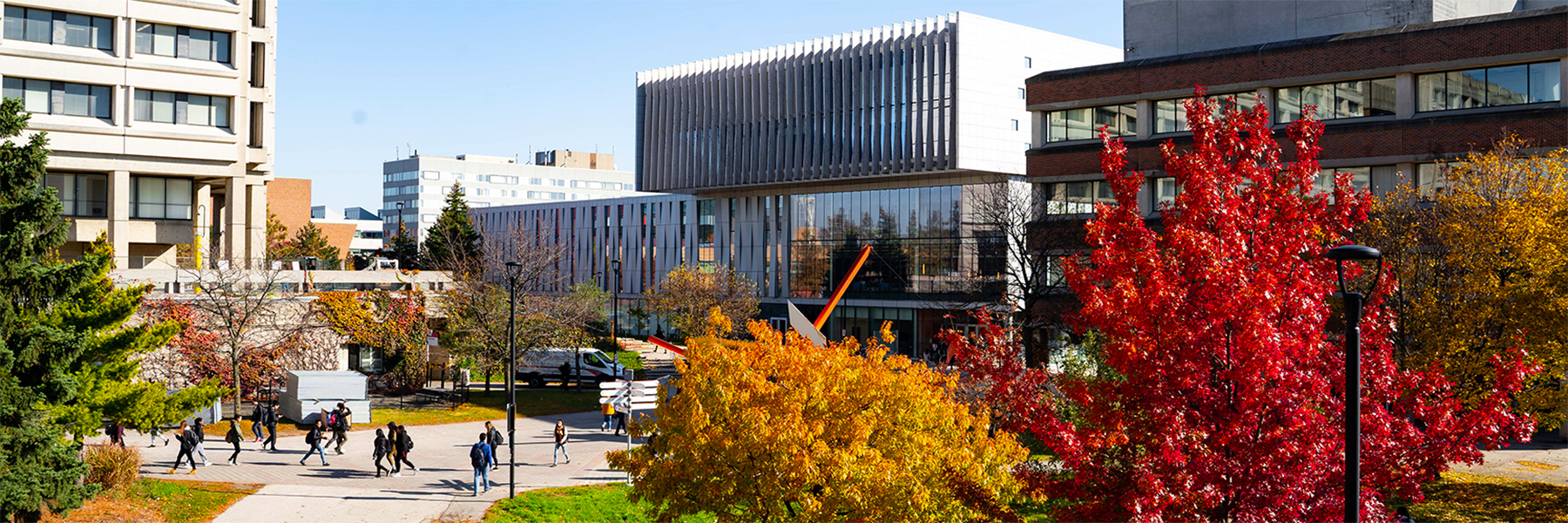Instructional needs of faculty, course directors and teaching assistants at York University are constantly changing and the ongoing COVID-19 pandemic has brought this into sharp focus. The University’s Teaching Commons has responded by rethinking and expanding their support, workshops and courses.
By Elaine Smith, special contributor

As the instructional needs of faculty, course directors and teaching assistants at York University change, the staff at the Teaching Commons adjust the workshops and services they provide accordingly.
“With the pandemic, we’ve had to really expand and extend the kinds of offerings we’ve traditionally had at the Teaching Commons,” said Geneviève Maheux-Pelletier, the Teaching Commons’ director. “Beyond merely pivoting to online delivery of services, we’ve had to rethink and expand our support.”
As course delivery moved online, the Teaching Commons staff attempted to “meet the instructors wherever they were,” said Maheux-Pelletier, whether that meant providing an introduction to using Zoom or answering questions about engaging students remotely. The Going Remote website had more than 30,000 page views from September 2020 to August 2021.
One thing that remained constant was access to the Teaching Commons’ educational developers.
“We continued our virtual office hours from 10 a.m. to noon so people could come with questions and we could provide just-in-time support,” she said.
In addition, the Teaching Commons has continued to offer its popular certificate courses, workshops and seminars. Courses are generally asynchronous and allow faculty, course directors and teaching assistants to use the eClass environment to work at their own pace. They can be taken individually or bundled into a certificate such as the Certificate of Proficiency for Teaching in eLearning. Two new courses were added to the certificate’s lineup this this summer: Beyond eClass: Interactive Pedagogies Using Zoom, H5P and More; and Caring to Teach: Supporting Student Transitions Between Teaching and Learning Environments.
“One of the positives coming out of the pandemic has been an interest in compassionate teaching and a heightened sense of the difficulties and hardships students experience and what it might mean to care for them in an online environment.”
Educational developer Natasha May co-created Caring to Teach, a four-module course that focuses on the pedagogy of care.
“This course was inspired by our postdoctoral visitors, Brandon Wooldridge and Ameera Ali, who were very eager, so it got things moving,” said May. “We met weekly during the winter to brainstorm ideas and also discussed it during our team meetings.
“The course connects Brandon’s research into the pedagogy of care from an instructor’s perspective and Ameera’s research into transitioning between learning environments with student well-being as the focus.”
May said that the first module explores what it means to incorporate a pedagogy of care into your courses, while the second looks at transitioning to remote learning and back and its impact on students. The next two modules focus on flexibility and what faculty can do to disaster-proof their courses, making the transition easier. The final module focuses on the faculty member’s own professional development and next steps.
Participants were able to take the course synchronously or asynchronously, with opportunities for weekly synchronous discussions and breakout rooms. There were 27 participants in the program, 21 of whom completed all the modules.
“I got all kinds of great ideas from the class and I hope we provided them with some support,” said May.
Additionally, the Teaching Commons also added the Active Learning Playground to its portfolio this summer. Educational developer Robin Sutherland-Harris led the development of the playground, comprising five one-and-a-half-hour sessions.
“It’s an idea that came up during a workshop series, said Sutherland-Harris. “Everything has been so unsettled and it seemed unclear what the fall would look like, so we wanted to support a flexible approach to teaching to keep everyone active and engaged. One way of responding to the uncertainty was to prioritize a conversation about implementing active learning strategies in the classroom.”
Each playground session explored one or more active learning strategies that faculty could use in various contexts (e.g. blended, face-to-face, online) and the ways they could be adapted to whatever the pandemic required. The program had 82 participants this summer.
“We’d talk about the strategies, such as six thinking hats or escape rooms, and have people use them in the session,” said Sutherland-Harris. “Then, we’d discuss their experiences of each activity and what challenges they envisioned in incorporating it into their courses. It was a fun and exploratory way of engaging with the uncertainty around teaching.”
This fall, the Teaching Commons team will be back on campus five days a week and will use their courses to experiment with two new classrooms that are equipped for collaborative learning and hyflex delivery (enabling remote participants to join the in-person session using Zoom and cutting-edge hardware).
“We’ll see how faculty in those classes respond to these modes as learners,” said Maheux-Pelletier. “It will also give them the ability to understand the learner’s point of view.”
Depending on the pandemic landscape this fall, “we’ll be as flexible and as thorough as possible in delivering our programming and in documenting results so we can see where the interest is and look toward the winter semester.”


